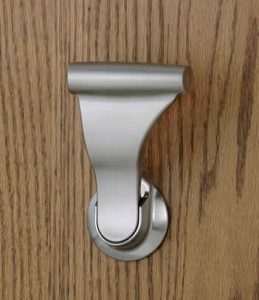 The American’s with Disabilities Act (ADA) was crafted to assist those with certain ailments to have the same level of access as the able bodied. Over the years this has led to regulations in many industries, including door hardware.
The American’s with Disabilities Act (ADA) was crafted to assist those with certain ailments to have the same level of access as the able bodied. Over the years this has led to regulations in many industries, including door hardware.
Many architects and builders feel like they are stuck with a standard door lever and just design around it. There are other options when it comes to getting a door open (more on that in a minute).
Here’s a look at a few of the door hardware pieces that typically go into any public building and the best cases for use each.
Hydraulic Closer
Heavy doors are common in public places, and having the ability for them to close behind a person comes in handy. Imagine a person with a walker or in a wheelchair needs access to a room behind a door. Without a hydraulic closer, they may be put in an unsafe predicament trying to close the door behind them (especially if it’s heavy).
This piece of equipment saves countless people from falling or sustaining injury by allowing them to pass all the way into the room before the door closes securely behind them, without the need for assistance.
Door Lever
If you’ve been in any public building in the U.S. you’ve seen a lever door handle. The type of handle you see in a private home (a knob) isn’t easy to turn if you have limited mobility in your hands. Some individuals have an impairment (e.g. arthritis) or lack the strength/ability to turn the knob and regulations require that ADA compliant door handles be installed in every public place.
Unfortunately, the “standard” levers aren’t great for all public spaces.
Being limited to a lever may be fine in an office or school, but for those who design lodgings for the elderly or disabled it may not be the best option.
Handles still require wrist strength and a turning twisting motion to open a door. If you design nursing homes, rehabilitation clinics, or other facilities that will be frequented or inhabited by a large disabled population, these handles may not be the best option.
A Better ADA Compliant Door Handle
Our UltraLatch door handle can be the answer to helping those less able open doors without having to turn their wrists at all. You simply push or pull our handle and the door is unlatched. If the door opens out, the handle allows for a stable door pull. If it opens inwardly, you can just push your weight into the door handle and gain entry (or exit).
Our door hardware has helped thousands of architects and builders make their designs both beautiful and functional as well giving them the highest ADA compliant door hardware on the market. Find out more about the SOSS UltraLatch here.